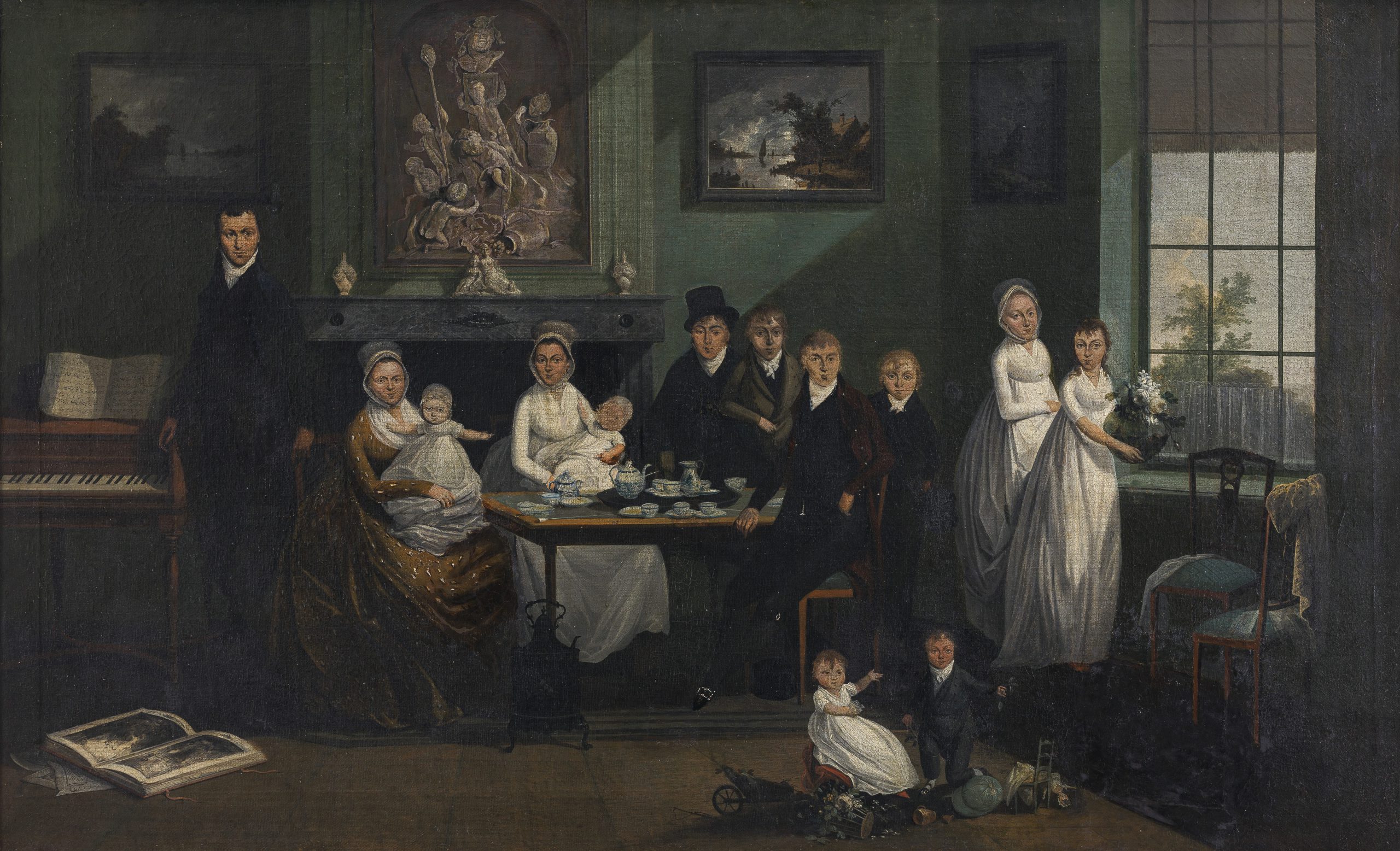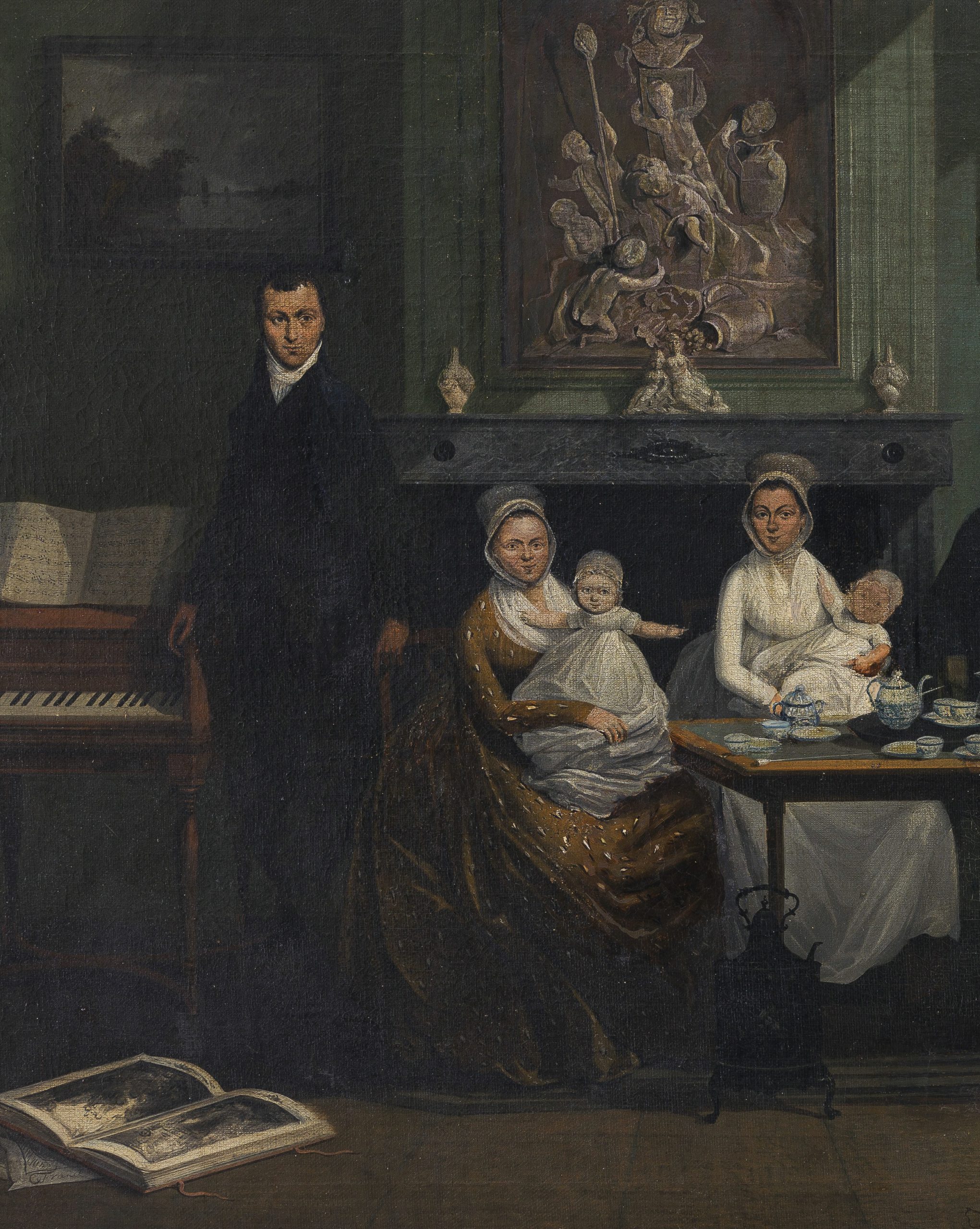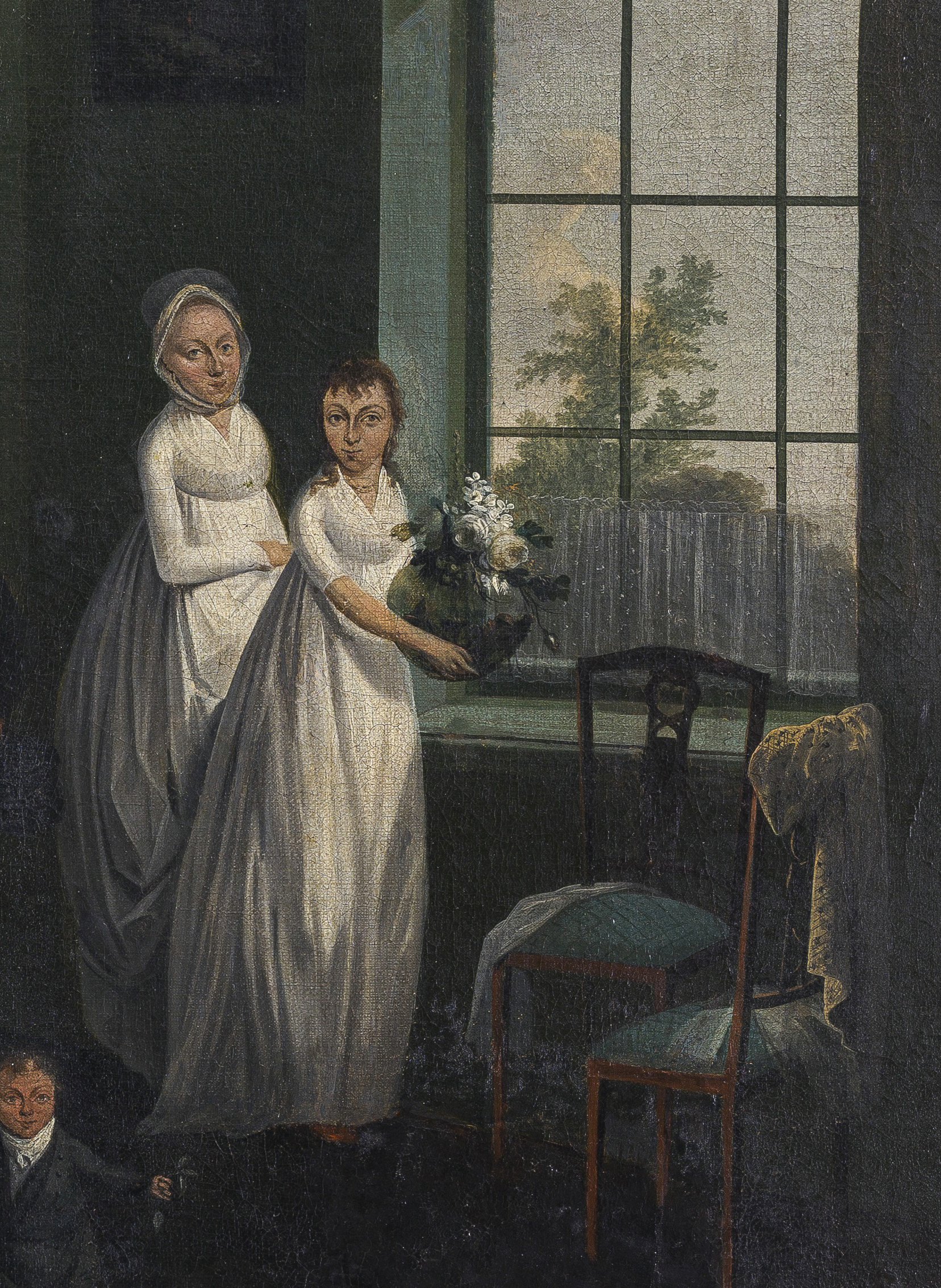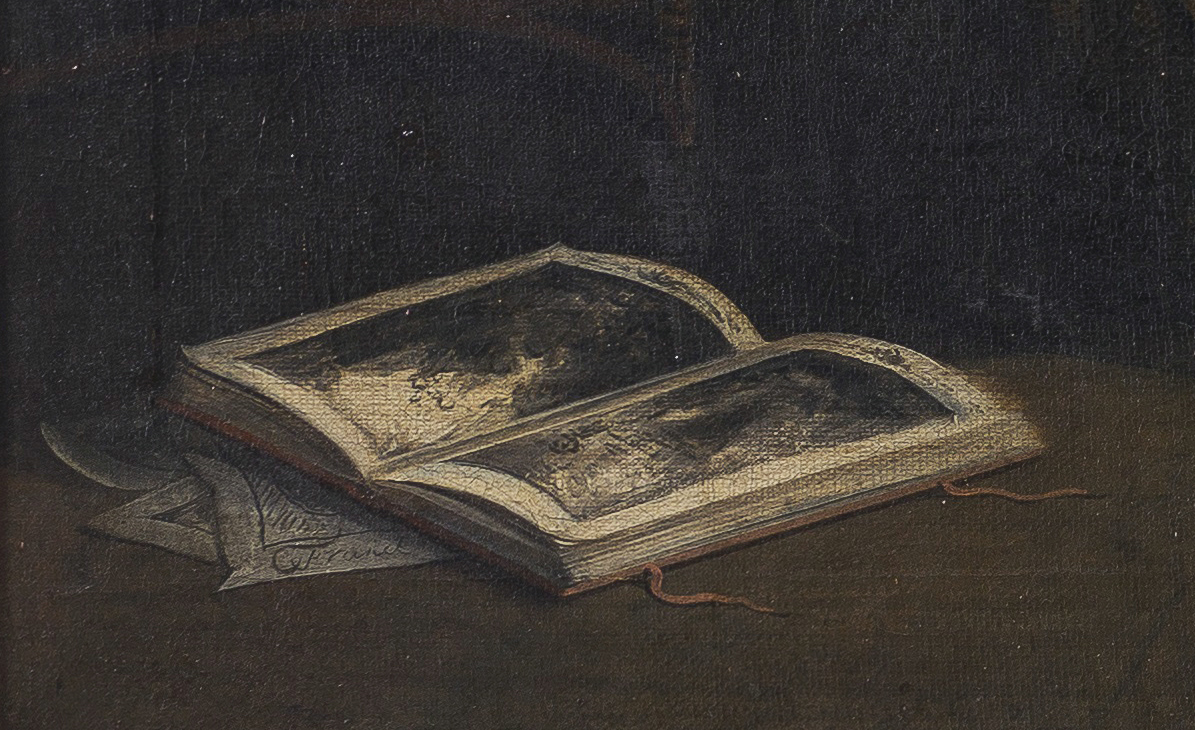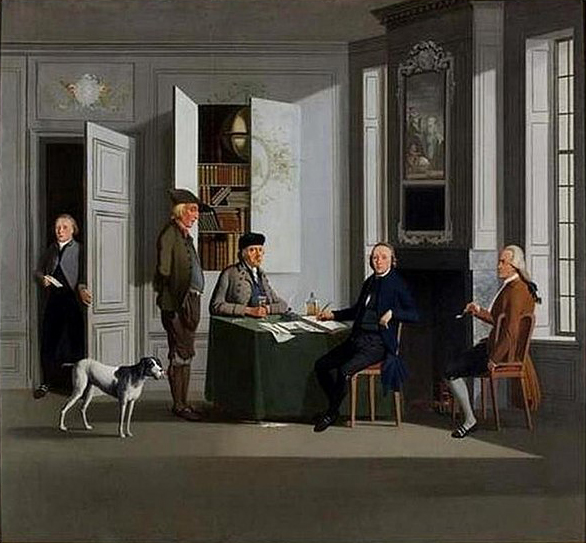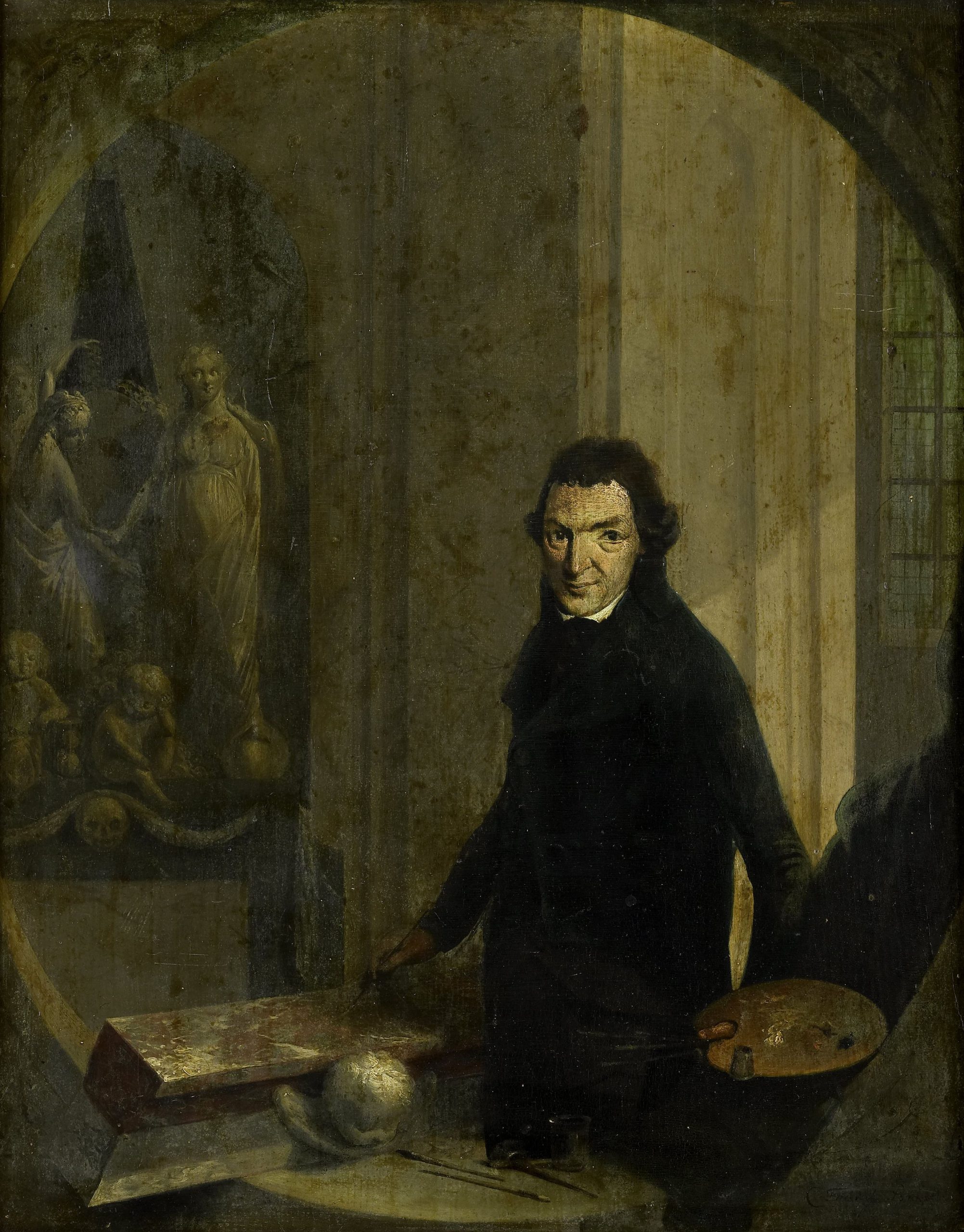CHRISTOFFEL FREDERIK FRANCK (Zwolle 1758 – 1816 Bennebroek)
Christoffel Frederik Franck (Zwolle 1758 – 1816 Bennebroek)
Group Portrait of a Family in an Interior
Oil on canvas, 79.5 x 128.5 cm (31.3 x 50.6 inch); presented in a black frame with gilt inner slip
Signed ‘Franck’ (lower left)
Provenance
Private collection, The Netherlands
***
Christoffel Frederick Franck was bron in Zwolle in 1757.1 He was taught by the painter of decorative ‘behangsel’ wall paintings B. van Megen, together with his step-brother, Adrianus Hulsbergen (1755–1828). In 1785 he moved to Leeuwarden, where he received commissions from leading families, also for inhabitants of Bolsward and Dokkum. In 1806 he moved west and settled in De Glip, near Bennebroek, close to Heemstede. He died by drowning in the Bennebroekervaart in 1818.
Franck specialised in large-scale ‘behangels’, which were fashionable during the period. An important ensemble of such decorative paitings, representing various phases of human life and personifications of the fine arts, survives in situ in the St Anthonie Gasthuis in Bolsward.2 He advertised in the Leeuwarden Courant of 13 December 1788, listing his prices for such works, ranging from 16 to 24 ‘stuivers’ per length of an ‘el’ (around 70 cm). He also produced easel paintings, notably landscapes, village views and genre scenes, some of which were included in the celebrated exhibitions Amsterdamse Tentoonstelling van Schilderijen en andere Kunstwerken, held in 1810 and 1813 in the Trippenhuis.
The present portrait is among Franck’s most accomplished portraits. An extensive group has assembled in an elegant interior, engaged in a variety of pursuits. Although the identity of the sitters is lost to time, the group appears to consist of two families, either two sisters or two brothers with their respective families. Two mothers sit in front of the fireplace, holding infants; they are flanked by two men, presumably their husbands, while three sons are portrayed by the gentleman in top hat. Two elder daughters in elegant dresses stand by the window, one holding a vase of flowers, and two toddlers are playing in the foreground, surrounded by toys, miniature furniture and flowers. The gentleman at the left stands by a piano, with an open volume on the floor in the foreground – it has been suggested that the book is the illustrated bible by Gerard Hoet, entitled Taferelen der voornaamste geschiedenissen van het Oude en Nieuwe Testament, published in The Hague in 1728.3 The prominent position of this bible may indicate that one of the gentleman in this portrait could have had a religious position. The artist’s signature appears on the drawn or printed papers underneath the volume.
The interior of the room is depicted with as much precision as the family members. The woodwork and walls are painted green, a fashionable colour at the period. The marble fireplace would appear to date from circa 1770 and is of a type that was typical for the north-west region of The Netherlands. As has been observed by Charles Dumas, the grisaille chimney painting, depicting putti worshipping a bust of Bacchus on a pedestal, is painted in the manner of the Flemish artist Martinus Josephus Geeraerts (1707–1791), who was active in the Southern Netherlands and Zeeland and also supplied pieces to clients in the north of the country. The paintings on the left and right of the fireplace, reminiscent of works by Salomon van Ruysdael and Roelof van Vries respectively, which again would situate this interior in the environs of Haarlem, where Franck was active from 1806.4 The clothing of the sitters would indicate of date of around 1810.
Our painting can for instance be compared to Franck’s portrait of the Leeuwarden merchants Reijnier Buysing (1743–1821) and Gerard Buijsing (1768–1820) and three other gentlemen, dated 1790, in the collection of the Fries Museum in Leeuwarden (fig.).5 It is also comparable to Franck’s group portrait of the Frisian noble Sminia family, shown around the table in the dining room of their country house De Klinze, circa 1790, which is in a private collection.6 A self-portrait by Franck is preserved in the Rijksmuseum in Amsterdam (fig.).7
SOLD
1. For the artist, see R. van den Eynden and A. van der Willigen, Geschiedenis der vaderlandsche schilderkunst (…), Haarlem 1816–1840, vol. II (1817), pp. 424-425 and A. Meddens-van Borselen, ‘Christoffel Frederik Franck. Een veelzijdig kunstschilder in Friesland’, Fryslân 6 (2000), no. 3, pp. 22-25.
2. R.Stenvert a.o., Monumenten in Nederland: Gelderland, Zwolle 2000, p. 91.
3. We are grateful to Drs Charles Dumas for this and his other observations on the painting, email correspondence, 12 September 2022.
4. Again, we are grateful to Charles Dumas for these observations.
5. Oil on canvas, 136 x 137 cm, inv. no. S1948-032; W. Fock, Het Nederlandse interieur in beeld 1600–1900, The Hague 2001, p. 321, repr.
6. Oil on canvas, 135 x 125 cm; Fock, op. cit., p. 330, fig. 283.
7. Oil on panel, 51 x 41.5 cm, inv. no. SK-A-2155; Pieter J.J. van Thiel, All the paintings in the Rijksmuseum in Amsterdam: a completely illustrated catalogue, Amsterdam 1976, p. 230, repr.
